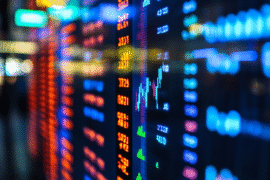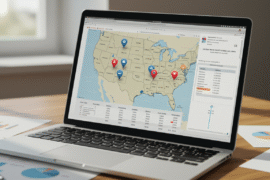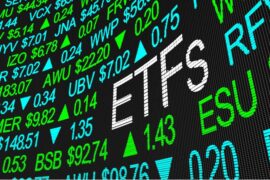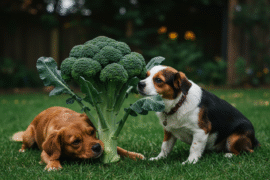This article may contain references to products or services from one or more of our advertisers or partners. We may receive compensation when you click on links to those products or services. Nonetheless, our opinions are our own.
The information presented in this article is accurate to the best of our knowledge at the time of publication. However, information is subject to change, and no guarantees are made about the continued accuracy or completeness of this content after its publication date.
Prices are going up in the hog market as the weekend approaches, which is a big change. This trend isn’t just a short-term change. It shows a more complex mix of seasonal habits, economic pressures, and changes in the supply chain. Understanding what is causing this rise can help farmers, investors, and consumers all make better choices. Pork is still a popular meat choice, especially as summer activities pick up. Pork is in high demand, from backyard barbecues to restaurant menus. Changes in supply because of health concerns and production problems are also making things worse. As futures contracts reach new highs, the market is sending strong signals that prices may stay high for a while. We’ll talk about the main reasons for the price rise, how it affects both producers and consumers, and what to look out for in the next few weeks.
Factors Behind the Rise in Hog Prices
Strong Seasonal Demand
The approach of summer brings predictable shifts in consumer behavior. Warmer weather encourages families and social groups to gather outdoors, with grilling becoming a central part of these events. Pork is a favorite on the grill, with items like ribs, sausages, and pork chops consistently in high demand. Restaurants also benefit from increased foot traffic during this time, especially casual dining venues that offer pork-based menu options. Retailers are responding by increasing pork orders to meet this seasonal demand. As this demand continues to grow, wholesale buyers become more competitive, placing upward pressure on prices throughout the supply chain.
Supply Constraints
While demand is climbing, supply is not keeping pace. Several hog producers have reduced herd sizes due to the high cost of feed and overall input inflation. Corn and soybean prices, both key components of hog feed, remain elevated, making it more expensive to raise hogs to market weight. In addition, there are growing concerns about health risks in hog populations. Recent alerts about disease outbreaks, particularly in concentrated farming regions, have prompted preventive measures, including culling. These factors combine to limit available inventory, especially in regions already facing production slowdowns.
Futures Contracts at New Highs
Futures contracts serve as a market tool to manage risk and predict pricing. When hog futures reach new contract highs, it signals optimism about continued price strength. These contracts allow producers to lock in prices for future deliveries, offering protection against declines but also confirming bullish sentiment in the market. Speculators, traders, and institutional investors may also jump in during price surges. This further drives up contract values, creating a feedback loop. Higher futures prices increase confidence in the market outlook, which in turn encourages more buying. The result is even greater upward pressure on the spot prices producers receive.
Classic Supply Demand Imbalance
Economics 101 plays a role here. When supply contracts and demand expands, prices naturally rise. That is what is happening now in the hog market. Consumers want more pork, but fewer hogs are available. This creates pricing tension across the entire supply chain, from farms to processors to grocery store shelves. Wholesale buyers are offering higher bids to secure their needed quantities. Producers are responding by evaluating the most profitable time to market their hogs. Retailers are adjusting their promotions and pricing structures based on supply availability and consumer expectations.
Seasonal Dynamics in the Pork Market
Seasonality has a strong influence on meat markets, and pork is no exception. In the spring and summer months, purchasing behaviors change. Shoppers buy more fresh cuts suitable for grilling, and foodservice businesses stock up on high-turnover pork items. Holiday weekends like Memorial Day, Independence Day, and Labor Day create predictable spikes in pork demand. Grocery chains often align marketing campaigns around these events, offering pork bundles or featured cuts to draw customers. The seasonal bump in both volume and urgency contributes to short-term price volatility, especially if supply is already tight.
Impact on Producers
Rising hog prices present both opportunities and challenges for producers. Strong market conditions can improve revenue, but strategic planning is required to maintain long-term profitability.
- Improved Profit Margins Higher market prices can enhance profitability, especially when feed and labor costs remain stable. Producers may see improved returns per animal sold.
- Adjustments to Production Strategy Some farms may consider expanding production or accelerating time-to-market for existing hogs. These decisions are influenced by current feed availability, cash flow, and forward pricing models.
- Risk Management Through Contracting While the current price environment is favorable, it can change quickly. Producers are encouraged to evaluate futures or forward contracts to secure pricing and reduce exposure to market dips.
- Herd Health and Biosecurity Disease prevention is critical. Any disruption due to illness can undo the gains made through favorable pricing. Biosecurity practices and veterinary oversight remain a priority.
Voted "Best Overall Budgeting App" by Forbes and WSJ
Monarch Money helps you budget, track spending, set goals, and plan your financial future—all in one app.
Get 50% OFF your first year with code MONARCHVIP
Effects on Consumers and Retailers
Price increases do not stop at the farm level. They affect the entire retail and foodservice landscape. For consumers, changes in pork pricing may already be visible in grocery store meat cases and restaurant menus.
- Grocery Store Price Adjustments Retailers may gradually raise prices on pork products as wholesale costs increase. Bacon, sausages, and ribs are often the first to reflect these adjustments.
- Menu Pricing in Restaurants Foodservice providers may face higher purchasing costs, leading to smaller portions, substitution of ingredients, or incremental price increases on menu items.
- Budget-Conscious Consumers May Shift Preferences When pork becomes more expensive, some consumers may turn to alternative proteins like chicken or plant-based options. This response can create small shifts in demand that retailers must monitor.
Monitoring Market Trends
Staying informed about hog market trends is essential for everyone along the value chain. Access to accurate data and market commentary helps producers make operational decisions and allows consumers to understand pricing patterns.
- USDA Weekly Reports These provide reliable data on slaughter volumes, carcass weights, inventory levels, and regional price movements.
- Industry Platforms Websites from agricultural associations and livestock marketing boards offer regular updates, articles, and expert analysis.
- Social Media and Forums Peer-to-peer discussion groups, while less formal, can offer timely tips and community-shared insights. However, these should be verified against formal sources for accuracy.
Helpful Resources
- USDA Livestock Reports: Weekly insights into pricing, slaughter statistics, and inventory trends.
- National Pork Producers Council: Policy news, market analysis, and updates on disease management and regulation.
- State Agricultural Extension Offices: Localized advice tailored to region-specific issues such as feed availability, weather conditions, and herd health.
Conclusion
There are a number of things that are making hog prices go up right now. These include seasonal demand, smaller herds, high feed costs, and strong futures activity. These trends can be good or bad, depending on where you are in the supply chain. The current market gives producers a chance to make more money, but only if they manage risks carefully. For customers, the effects may be small price hikes at the grocery store or restaurant. Retailers need to find ways to deal with these changes that keep both their profits and their customers’ loyalty. Finally, keeping an eye on reliable data and being ready for changes in the economy and the seasons are the best ways to stay competitive in the hog market.
Frequently Asked Questions
What is the current trend in hog prices?
Hog prices are trending upward due to strong consumer demand, particularly for grilling season, and constrained supply.
What are the main reasons for the price increase?
Reasons for price increases include higher feed costs, reduced herd sizes, seasonal demand spikes, and rising futures contracts.
What does a “contract high” mean in the futures market?
It refers to a price level that is the highest reached for a particular futures contract, indicating strong optimism among market participants.
How are producers affected by the price increase?
Producers may benefit from improved margins but must manage operational risks through careful planning, contracting, and herd health monitoring.
Will consumers see higher pork prices?
Yes. Consumers may notice price increases in grocery stores and restaurants as wholesale pork prices rise.
Could prices go down later in the year?
Yes. If supply recovers or demand declines after the summer peak, prices could stabilize or fall. Market data will provide early indicators of such trends.

Reviewed and edited by Albert Fang.
See a typo or want to suggest an edit/revision to the content? Use the contact us form to provide feedback.
At FangWallet, we value editorial integrity and open collaboration in curating quality content for readers to enjoy. Much appreciated for the assist.
Did you like our article and find it insightful? We encourage sharing the article link with family and friends to benefit as well - better yet, sharing on social media. Thank you for the support! 🍉
Article Title: Pork Prices Rising Fast as Summer Begins
https://fangwallet.com/2025/06/28/pork-prices-rising-fast-as-summer-begins/The FangWallet Promise
FangWallet is an editorially independent resource - founded on breaking down challenging financial concepts for anyone to understand since 2014. While we adhere to editorial integrity, note that this post may contain references to products from our partners.
The FangWallet promise is always to have your best interest in mind and be transparent and honest about the financial picture.
Become an Insider

Subscribe to get a free daily budget planner printable to help get your money on track!
Make passive money the right way. No spam.
Editorial Disclaimer: The editorial content on this page is not provided by any of the companies mentioned. The opinions expressed here are the author's alone.
The content of this website is for informational purposes only and does not represent investment advice, or an offer or solicitation to buy or sell any security, investment, or product. Investors are encouraged to do their own due diligence, and, if necessary, consult professional advising before making any investment decisions. Investing involves a high degree of risk, and financial losses may occur including the potential loss of principal.
Source Citation References:
+ Inspo
U.S. Department of Agriculture, Economic Research Service. (2025, June 18). Livestock, Dairy, and Poultry Outlook: June 2025 (LDP‑M‑372). USDA‑ERS.












































